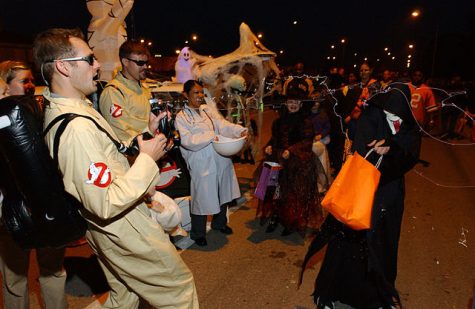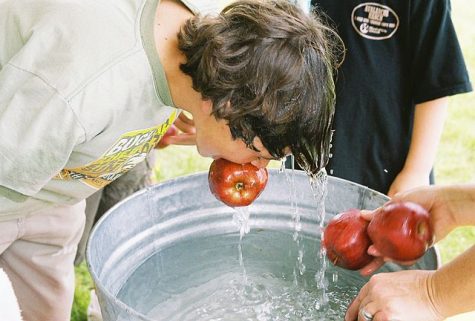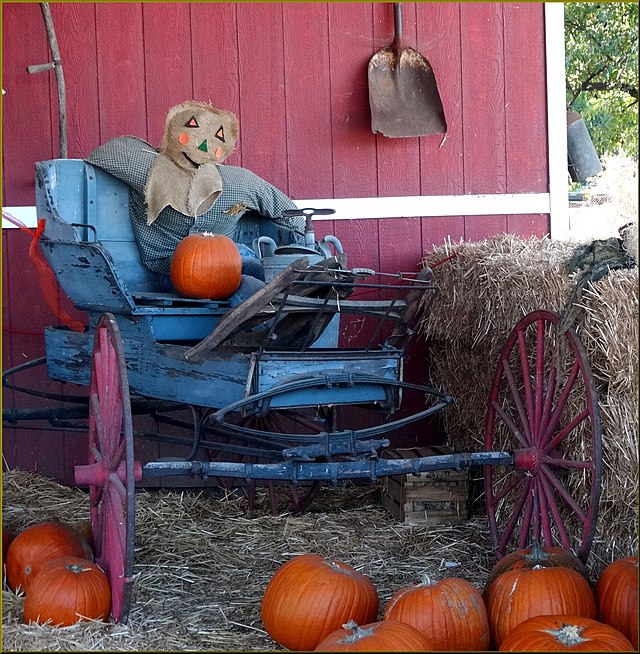How did Halloween begin?
Halloween’s tricks and treats began a long, long time ago. Read to learn about the Celtics and Romans influence on our modern day traditions!
inkknife_2000 (7.5 million views +), CC BY-SA 2.0, via Wikimedia Commons
Pumpkin patches are a popular Halloween tradition. Scarecrows are used to keep the birds off the pumpkins and other crops.
The spooky season is upon us. Less than a month until doorbells are being rung by kids shouting “Trick or Treat!” Halloween is full of candy, treats, frights, and a fun night on October 31st. The common tradition is to dress up in your favorite costume and go ring people’s doorbells to receive candy or a spooky surprise. Some people give you Snickers and Jelly Beans, and some give you school supplies and granola bars. It’s always a surprise! Enough about how fun Halloween is, the reason we are really here is to talk about how this fun and frightening tradition began.

The origins of Halloween go all the way back to the ancient Celtic festival of Samhain. Two thousand years ago, the Celts lived where Ireland is now, the United Kingdom, and some of northern France. They celebrated their new year on the first of November. It signified the end of the summer and harvest season and the beginning of the winter. Winter was often associated with death of humans because it was dark and cold. It was believed that the night before the new year, the worlds of both the dead and the living had a blurred boundary. So, on October 31st they celebrated Samhain because they believed that was when the dead would return to earth.
Not only did the spirits cause trouble with crops, but they were rumored to help the Celtic priests make future predictions. Especially because the winter was harsh, the prophecies were comforting to the people who were otherwise dependent on the more natural world. Huge bonfires were built to burn crops and animals in sacrifice to the Celtic deities. Celts would wear costumes primarily made of animal heads and skins and they would try to predict each others futures. After the celebration concluded, they would light their hearth fires again because they were extinguished earlier in the night to protect them from the incoming winter.

The Roman Empire conquered a large amount of the Celtic territory by 43 A.D. They ruled for 400 years and in that time there were two festivals, originating in Rome, that then were combined with the Samhain celebration. One of them was called Feralia and it was at the end of October. It was when the Romans commemorated the passing of the dead. The second one was a day honoring Pomona, the Roman goddess of fruit and trees. An apple is the symbol of Pomona and this correlates to the modern day tradition of bobbing for apples on Halloween.
That’s pretty much where it all began! In short, it started with an an event called the ancient Celtic festival of Samhain. People used to light up bonfires and put on costumes in efforts to fend off the ghosts. Pope Gregory III made November 1st the day to honor all saints. All Saints day had some traditions of Samhain and the night, or evening, before was called All Hallows Eve then turned into the name Halloween. As time has passed, it has turned into trick-or-treating, pumpkin carving, and more fall festival activities.
Have a happy and safe Halloween!


